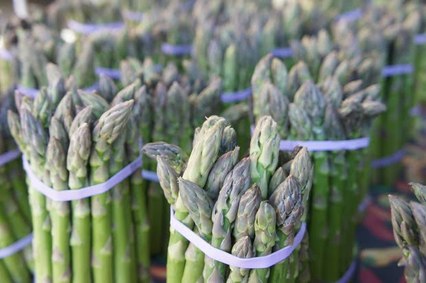
tel: 512-280-1192 Friday, Feb 24, 2012
Nursery Notes: New shipment of pottery arrived this week - big
selection to choose from. Lots of water fountains too. Also we
now have roses: 50 varieties of antique, knock-out and David
Austin roses available!
_____________________________________________________
THE SPRING 2012 LECTURE SERIES kicks off this Sunday:
'All You Need to Know about Growing Tomatoes,” with experts
Kevin Callaway (soil prep, compost, fertilizers), Dwight Littleton
(raised beds), and Chris Winslow (weather and varietal choices).
2 p.m. Feb 26. Free. Some other speakers to look forward to:
Next Sun ‘How to Have a Lovely Garden… and Eat It Too,’
with former Austin American Statesman writer Renee Studebaker.
And for the rest of the speaker series...
_____________________________________________________
March 11: 'Birds, Butterflies and Bees: How to Attract the 3 Bs
to your Garden,' presented by master gardener Amanda Moon.
_____________________________________________________
March 18: ‘South by Southwest Garden to Table Cooking Demo’
with a focus on fresh peppers and herbs. Presented by the Cool Mint
Cafe (San Marcos).
_____________________________________________________
March 25: ‘An Intro to Creating a Water-Wise Landscape’
Caroline Foley (Diamondscape) will discuss planning, proper soil
choice, drainage, and maintenance.
_____________________________________________________
April 22: ‘Earth Day Special: ‘Realizing the Principles of Food
Safety and Self-Reliance within the Texas Home Gardening
Tradition’ presented by George Altgelt (Geo Growers).
_____________________________________________________
April 29: ‘The Mysteries of Herbs’ with Susan Wittig Albert,
author of the bestselling China Bayles mysteries.
_____________________________________________________
May 2: ‘Three Composting Alternatives: Bokashi, Black Soldier
Fly and Worm Composting’ presented by Patrick Van Haren
(Microbial Earth Farms)
_____________________________________________________
June 3: ‘How to Use Organic Soils to Drought-Proof your Lawn
and Gardens,’ presented by Kyler Fields (The Ground Up, Houston)
_____________________________________________________
Central Texas Gardener (KLRU-TV): Tips on how to raise
chickens from Michelle Hernandez and Carla Jean Oldenkamp of
the Austin Funky Chicken Coop tour. (Michelle spoke at the nursery
last spring.) And a tour of Carla’s Zen Hen House. Sat. noon or
4 p.m. or Sun: 9 a.m. www.klru.org/ctg/

 Visit the website:
Visit the website: